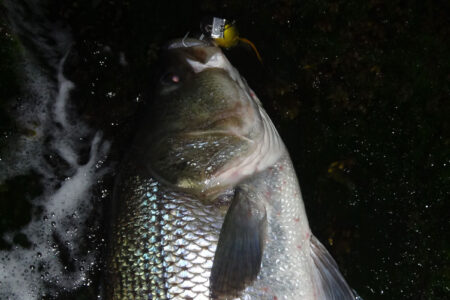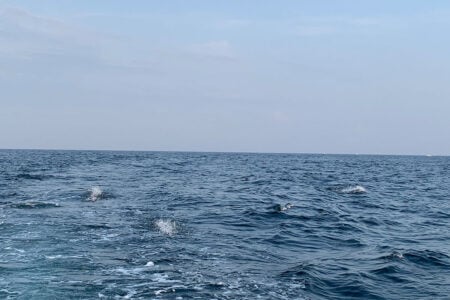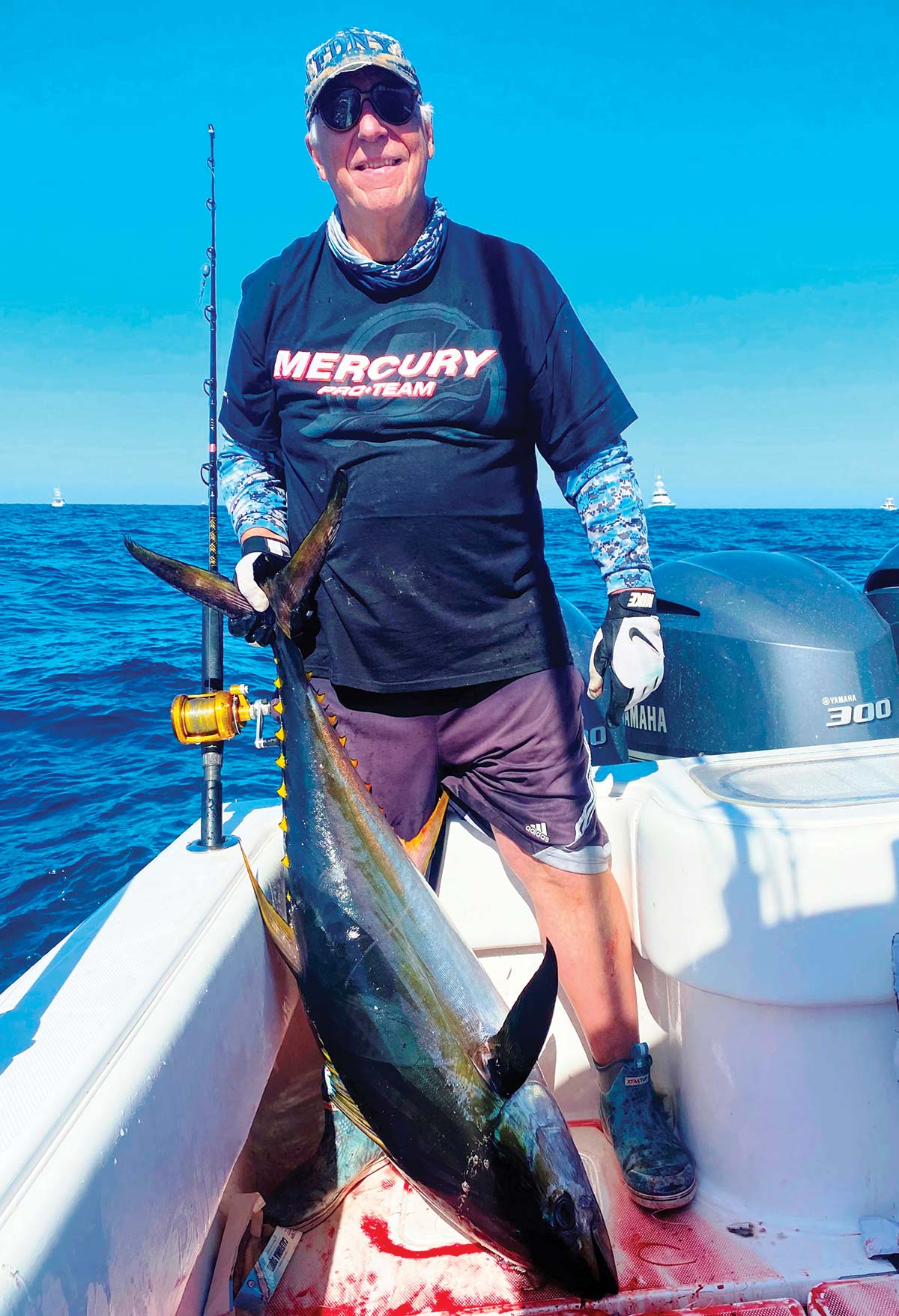
Pro tips on how to set up your ultimate offshore combo.
Jersey Shore, Long Island and New England coastal anglers are all blessed with the ability to target multiple offshore species relatively close to home. Some of these big game opportunities can be much closer than you’d think, with the recent phenomenon of big sharks and bluefin mixed in with the massive bunker schools often located in 20- to 40-feet of water just outside the surf line of many ocean-side beaches and inlets.
Migrating bluefin and yellowfin typically frequent the 25- to 30-fathom hangouts for much of the summer, while at least nine species of pelagic sharks can be found within an hour’s run from most inlets, plus white and blue marlin, mahi, wahoo, and plenty of other warm water exotics that can also be found in near offshore North Atlantic waters. Head out to the edge and you can expect all of these aforementioned species and more, with bigeye tuna and longfin albacore joining the party.
With all these possibilities, fishing tackle has experienced a rapid progression over the past decade, as many coastal anglers morph their fishing techniques to take advantage of emerging big game species (think bluefin and big sharks close to shore in the bunker schools or high-speed, 10- to 18-knot Madmacs trolled offshore for tuna). Accordingly, the concept of the “ideal offshore rod and reel” has also shifted in the minds of those who ply near offshore and canyon waters.
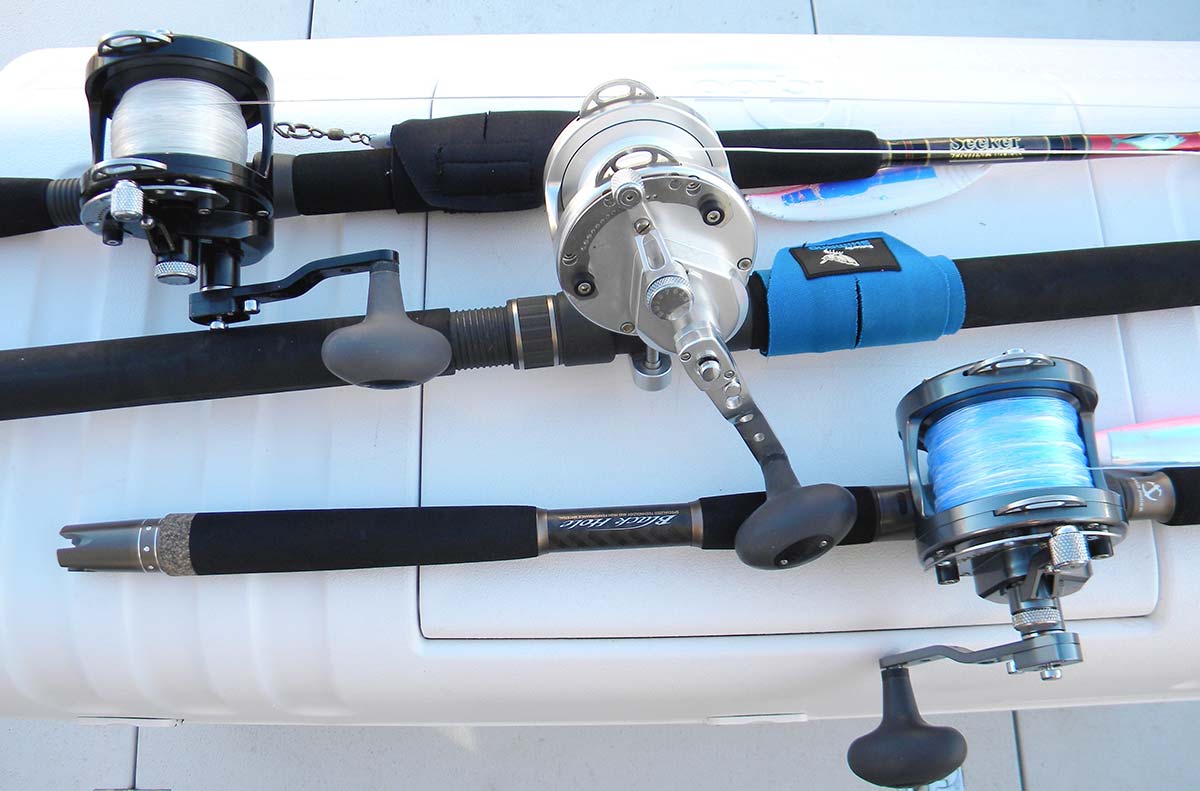
I am frequently asked on my home and away charters, at boat shows and on the seminar circuit, “If you could only bring one outfit with you on an offshore trip, what would it be?” That’s an interesting question and not surprisingly, as new technologies have been introduced, my answer has changed a few times over the years. Before I start to spend time on my latest favorites, let’s take a closer look at the five primary missions that your ultimate “all-in-one” outfit might have to accomplish on your next offshore trip:
1. Casting
When running into “foamers” – West Coast slang for tuna feeding on the surface – that are hammering baitfish schools 50 yards from the boat in deeper waters, being able to cast (especially sidearm, backhand and underhand, as overhand is always an adventure in a small boat cockpit) a popper or darter consistently, without wind knots or backlashes, is an absolute must. This mandatory requirement effectively eliminates many conventional reels from consideration, except in the hands of the more qualified and competent angler. For most fishermen, spinning outfits are easier to use and cause less angst when repeating the arduous cast-and-retrieve process hundreds of times a day. Although line twist – typically caused by rotating the handle and bail when the fish is ripping off line in the opposite direction – can be a real inconvenience on a spinner, dragging the line aft of the boat when you are heading upwind/uptide to set up another drift can easily fix the problem.
2. Jigging
Although a jigging combo typically doesn’t require the long-cast capability found on rods/reels designed to sling a 3- to 5-ounce lure 40 to 60 yards out from the boat during a feeding frenzy, the ability to sidearm or underhand a 15- to 25-yard lob cast away from the cockpit is a nice feature. This puts your ideal jigging outfit within the realm of both spinning and conventional setups. A high-speed gear ratio is always a plus for this type of equipment, which lessens the amount of frenetic handle cranking required to imitate a fleeing baitfish coming up from the depths. However this feature also acts as a potential detriment when it’s time to bring that pelagic to boatside after a hookup.
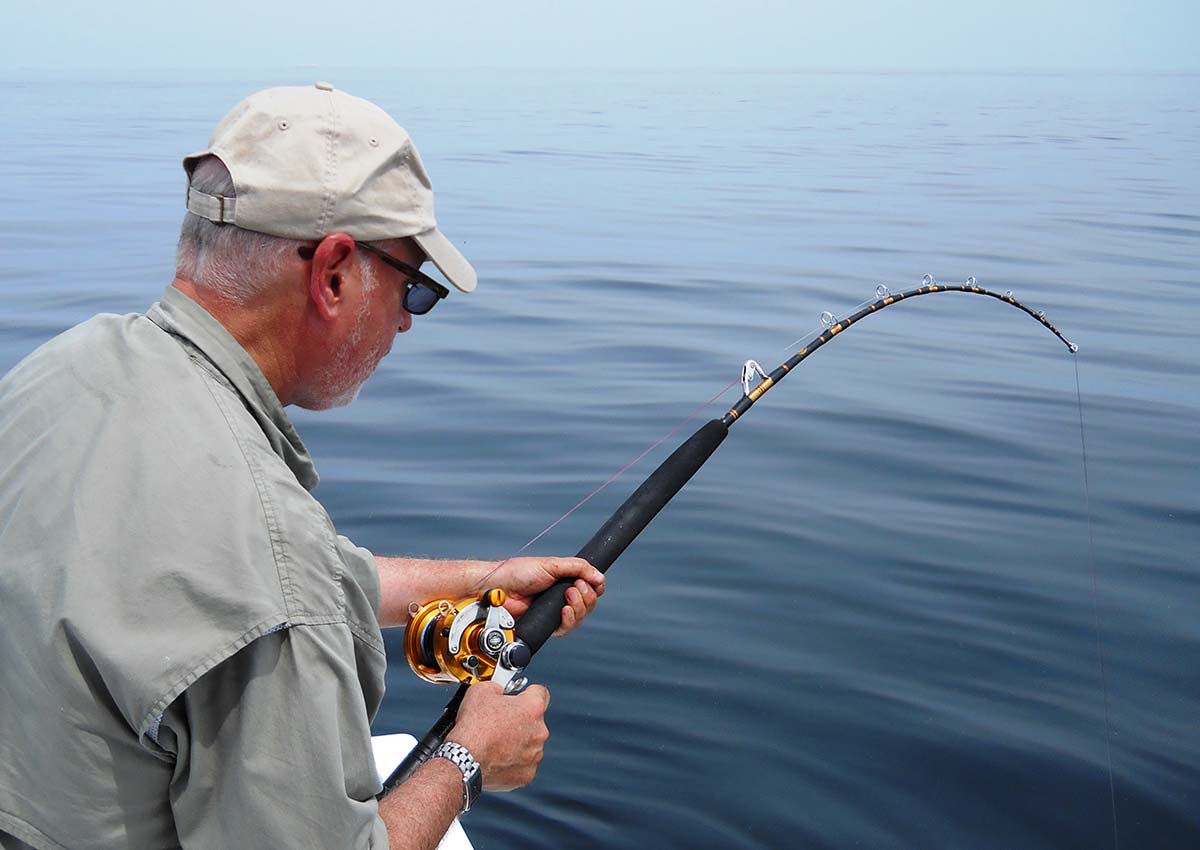
3. Bait Fishing
Dropping a chunk back into the slick or drifting a live bunker is doable with both a spinner and a conventional outfit, but this is eminently easier with a revolving spool reel. Whether it’s a star drag or lever setup, you can either engage the clicker (star drag) or engage the clicker and add a bit of resistance (lever drag) to prevent the dreaded birds nest if a fish suddenly engulfs your bait and heads off to the horizon at 30 mph after the pickup. With a spinner, if you don’t have a dual drag bait-runner system, you have no way of putting tension on the spool with the bail disengaged. Another challenge happens after the pickup, when the bail must be flipped when line is literally melting off the reel spool. Can it still be done? Sure, but it’s not ideal. It’s also harder to let more line out with a spinner, flipping the bail on and off dozens of times.
4. Bottom Dropping
If you are operating in the lower water column around a wreck or submarine ledge and must frequently let out line from your reel to stay connected to the bottom, a conventional star or lever drag reel is typically your best bet. One of my favorite techniques when performing this dance is to keep the reel in free spool with thumb pressure to afford short, consistent drop-backs. After a fish picks up the bait or jig, engaging the reel and while simultaneously lifting the rod tip sets the hook and it’s “game on”. Can you perform this task with a spinner? Sort of, but you will need to keep flipping the bail back and forth which is a pain. When I’m snap-jigging a deepwater wreck with a 4000-series spinning reel, I’ll lighten the drag, keep it in gear and pull out line from the spool by hand with the bail engaged to stay connected with the bottom. When a fish hits, I’ll set the hook and take a quarter-turn on the drag knob to put more pressure on the fish to bring it up to the surface.
5. Trolling
There are many times when you might troll around a potential hotspot in your search for fish. Conventional rods excel in this regard, especially lever drag setups, where you can tailor the amount of drag to be ideal for pulling a bait or lure in the wake and then have a predetermined “strike” setting when it’s time to fight the fish. Can you employ a heavy duty spinning outfit to perform the same task? Theoretically yes, but you have no predictable way to set and reset the drag once you start making adjustments on the spool’s rotary knob.
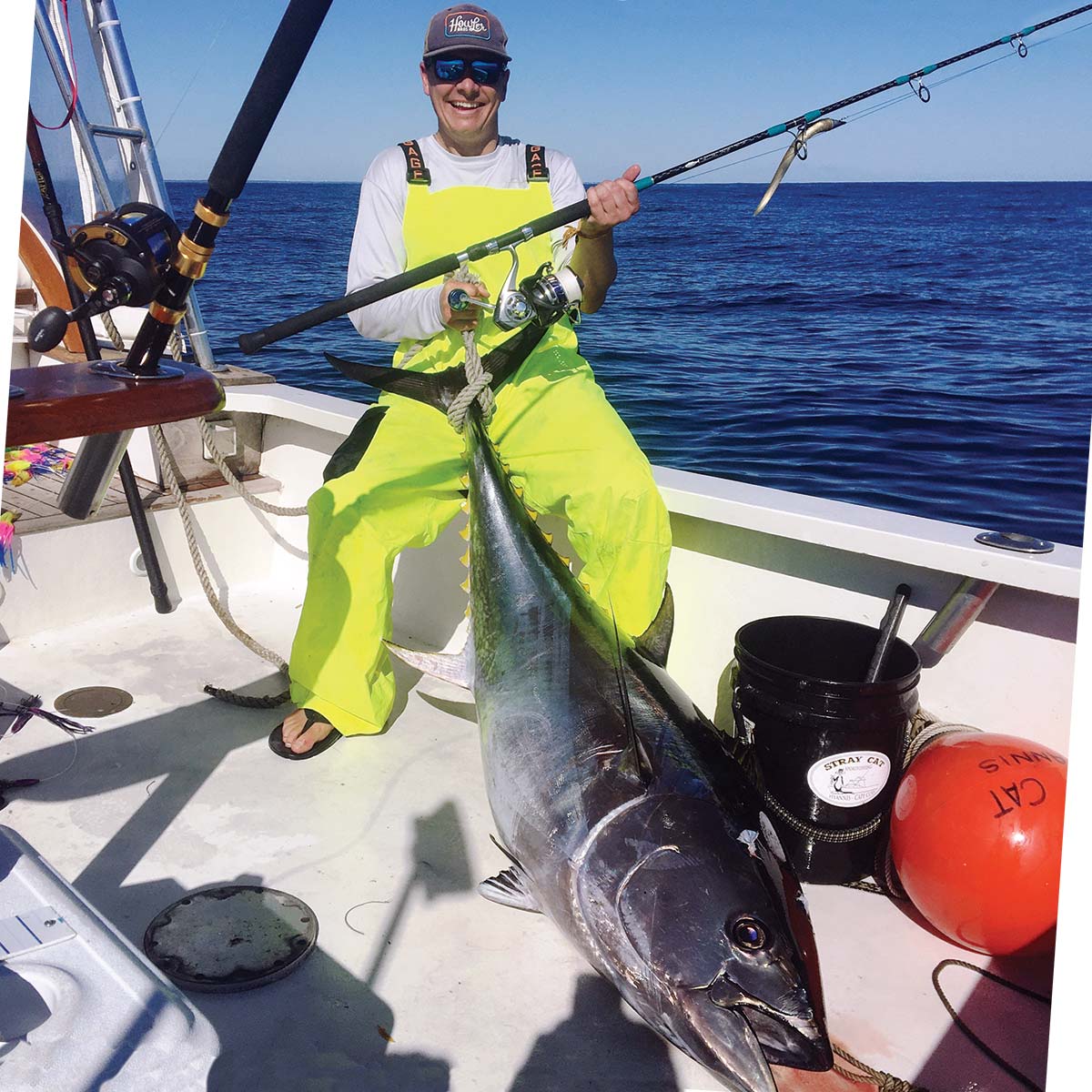
I actually own a total of four ideal setups for “the one rod I’d take offshore, if I could only bring one.” They are two spinners, medium and heavy, plus a pair of two-speed lever drag setups, medium and heavy. One proviso for this comparison is that heavy for me might actually be light or medium for you.
The following are the four outfits that are currently in my “if I can only take one” arsenal.
Conventional Heavy– The Penn 16VSX has been my favorite ever since it was introduced a decade ago. It can perform four out of five functions (jigging, bait fishing, bottom dropping and trolling) magnificently. Does it cast well? Not really; so last season I picked up a Penn 12VSX reel that’s considerably lighter than my sweet 16 and casts a bit better, getting a 4.5/5 star rating. I match the 16 VSX to a 6-foot, 30- to 80-pound Penn International V and spool it with 550 yards of 80-pound braid with 50 yards of 80-pound mono topshot. The 12VSX is installed on a 6.5-foot Seeker 40- to 60-pound Cali style jigging rod and is spooled with 550 yards of 65-pound braid with 100 feet of 80-pound mono topshot. This allows for a modest 35- to 40-yard casting distance if required. The “reel” asset for either of these outfits is the mega drag capacity of the VSX series, combined with a two-speed gearbox, which is a total difference maker when convincing a stubborn gamefish to come up from the depths.
Conventional Medium- I alternate between two relatively new outfits for this category, one being a Shimano SpeedMaster 8II (18 pounds of maximum drag) two-speed lever drag, married to a 6-foot Shimano Trevala rod with a fast tip and heavy action, rated for 40- to 80-pound braid. The other is a Penn Fathom 25N lever drag two-speed (33 pounds of maximum drag) that’s combined with a Penn Carnage III jigging rod measuring 6 feet, 2 inches, with medium heavy action that’s rated for 50- to 130-pound braid. Both of these excellent rods feature trigger grips, which aid greatly in controlling the outfit when casting, retrieving or fighting a fish and each fulfills all five of the functionality requirements stated earlier. Both reels are spooled with 400-plus yards of PowerPro’s Maxcuatro 50-pound braid.
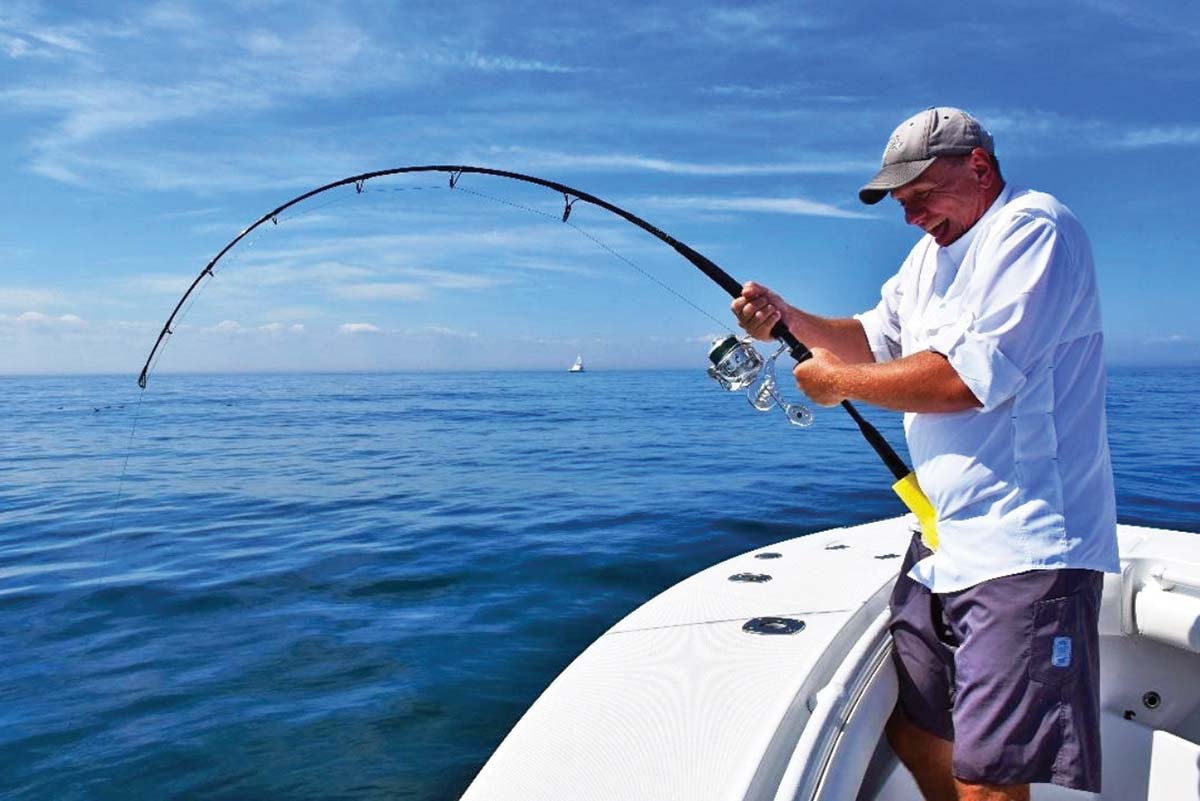
Spin Heavy- My Shimano Stella 14,000, spooled with 400-plus yards of 65-pound Maxcuatro braid gets the call when a heavy duty spinner is required. It can dial in a whopping 55 pounds of maximum drag and weighs less than 25 ounces. Matched to a 7-foot Daiwa Saltiga 70 HS jigging rod rated for 65- to 120-pound braid, you can cast it all day long and it won’t wear you out. This is a solid three-tool player (casting, jigging, bait fishing) that is on the high-end of my fishing tackle arsenal.
Spin Medium- For this category, my Penn Battle III 6000 series spinner holds 350 yards of 40-pound braid and can dial in 25 pounds of drag. To help it achieve its mission objectives, it is mated to a short 5-foot, 8-inch St Croix RIFT jigging rod that makes this a solid three-star candidate (casting, jigging, bait fishing) for getting the job done at a very reasonable price tag. It’s a great choice for bunker snagging and dragging when large school tuna are in the area.
Whatever outfit that you create to enjoy your favorite type of bluewater sport fishing, when it’s time catch ‘em up, each style of rod/reel has advantages and disadvantages. Pulling 30 to 50 pounds of drag, while theoretically possible for some XXL sized humanoids, is not a lot of fun if you own a one-speed reel with no belt or harness setup to aid in redistributing the stress that is associated with this endeavor.
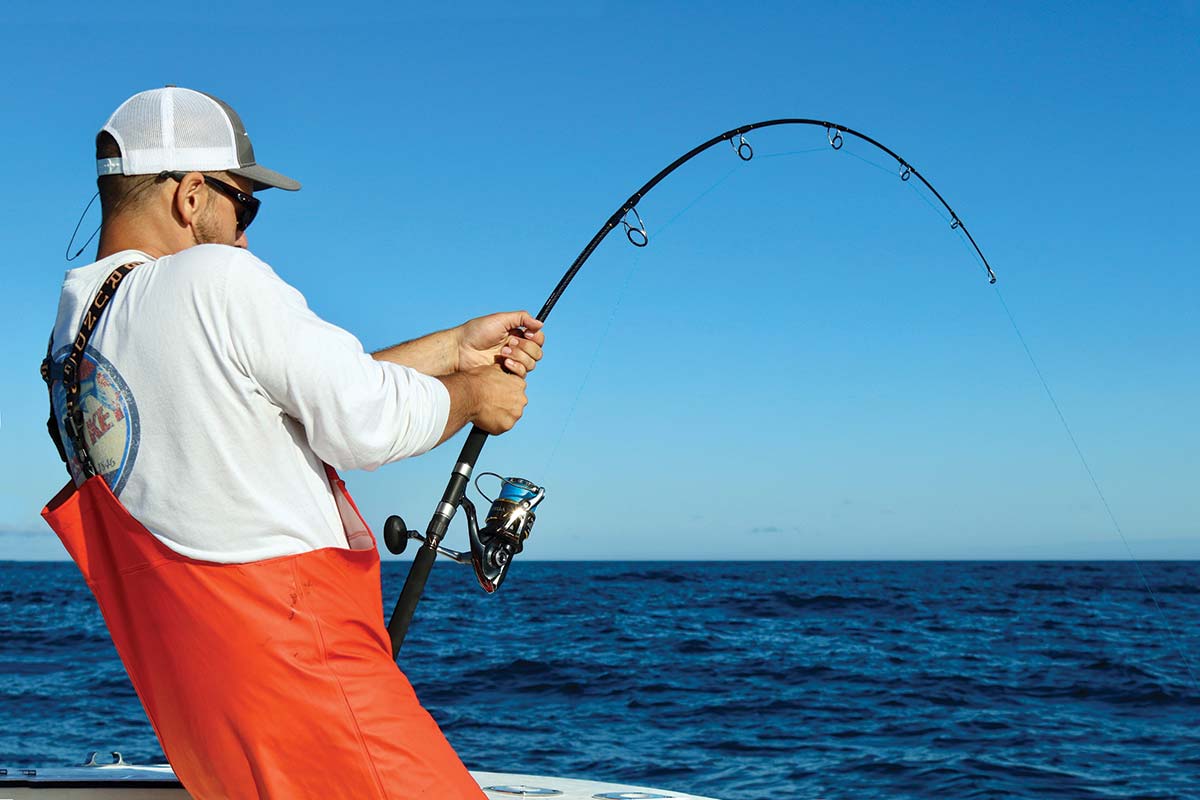
Hold Tight, Fight Right
Braid and AFTCO manufacture a neat, low-cost item called a Spin Strap (AFTCO) or a Reel Rest (Braid). For less than $20, it allows spin oriented anglers to add some muscle (your back muscles) to the fight, to help end your piscatorial argument in the shortest amount of time. It also solves one of the two major problems (one-speed reels and no attachment to a kidney or shoulder harness) of using spinning gear to fight large pelagics.
Since the primary methodology to defeat a big fish with an outsized spinner is to crank down on the drag and pull up on the rod with your arm(s) before reeling in the slack line – bowing down to keep it tight – the ability to attach your outfit to a belt and harness provides welcome relief. With this Spin Strap/Reel Rest connection, it’s now possible to let go of the rod with your arms, lean back on the kidney/shoulder harness with your lower back to load up the rod and crank in the line with your reel hand. This is a small change that makes a major difference.
Standup conventional rod and reel anglers have been doing it this way for many decades, so there’s nothing new here for them. Companies like Braid, AFTCO, Smitty’s Belts, Play Action and others all offer multiple options when it comes to this type of belt and harness gear. I have been using OG Reliable Gaff fighting belts for over five decades of big game fishing and many 250-pound plus tuna, swordies, and 300- to 400-pound or better sharks have been brought to boatside either by me or my charter anglers. I have augmented this Reliable belt with a variety of Braid and AFTCO kidney harnesses and since it’s not broke, I’m not going to fix it!
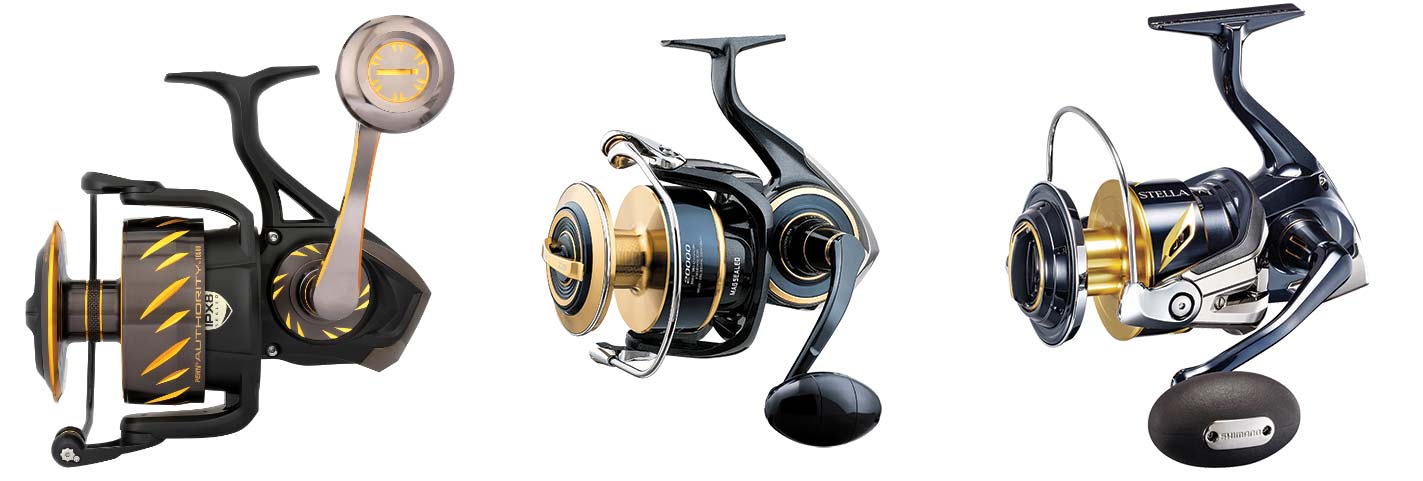
Affordable & Reliable
Before you start to act like a kid in the candy shop the next time you hit your favorite tackle shop, you should establish a realistic budget before considering the purchase. Top-of-the-line spinning reels like the Shimano Stella and Daiwa Saltiga can set you back more than $1,000 per unit. Match a high-end rod that will allow you to get all that capability out of the reel and that’s another $300 to $400 added to the price. Top it off with 400 to 500 yards of top-shelf braid and a wind-on leader to complete the turnkey fishing package and you are now approaching $1,500. If you are going to use this rod and reel combo five days a week and get maximum utility out of your investment, it’s worth it. But if you are getting it wet only two or three times a year, maybe not.
Although I own a Shimano Stella 14,000 setup, many of my everyday “bluewater” spinning outfits consist of a mix of Penn Slammer IV, Penn Battle III DX and Shimano Saragosa reels, most of which will set you back a third of the price of a top-end Stella or Saltiga, with only a bit less capability. Many of these mid-priced reels are good enough to get the job done without breaking the bank; there are no “bad” choices here. If you have the money to get a rocket launcher full of $1,000 spinning reels, go for it. If you don’t, maybe one or two will better fit your budget.
Reliability and user serviceability are two concepts that frequently go hand-in-hand and to quote a popular INXS song from the 80s, “one thing leads to another.” If your chosen reel is easy to clean, maintain, take apart and put back together, you’re more likely to pay attention to it and it’s likely to last longer. Some of those $1,000 reels feature proprietary technology and require being returned to the dealers for costly servicing and periodic maintenance, due to the need for special tools, fluids and parts. That could be a deal-breaker for those on a budget who want their gear to stand the test of time.
Sometimes availability is the best capability; keep your gear simple and make sure it works.

